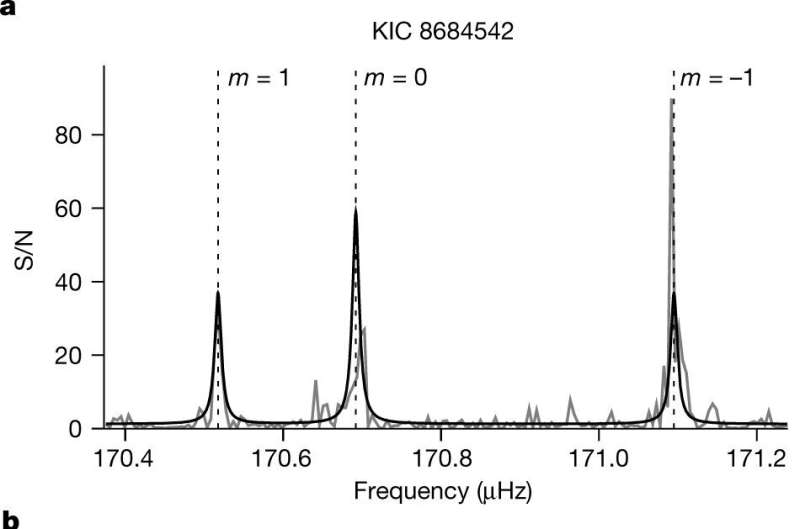October 11, 2022 report
Measuring oscillations of light from red giant stars reveals strengths of their interior magnetic fields

A quartet of researchers at IRAP, Université de Toulouse, has found a way to measure the interior magnetic field of red giant stars. In their paper published in the journal Nature, Gang Li, Sébastien Deheuvels, Jérôme Ballot and François Lignières describe how they used data from the Kepler satellite to calculate the interior magnetic field strength for red giants. Lisa Bugnet, with the Flatiron Institute, in New York has published a News & Views piece in the same journal issue outlining the difficulties in measuring magnetism in stars and the work done by the team in France.
Red giants are stars that have exhausted their inner hydrogen core leaving behind a helium center with a burning outer hydrogen shell. Such stars are studied by noting the makeup of the light they emit along with periodic dimming and brightening. In this new effort, the researchers wondered if it might be possible to use such a small amount of data to calculate the inner magnetic field of such stars.
The researchers began their work by noting that prior researchers have shown that most red giants vibrate and that such vibrations are likely due to a strong magnetic field inside of them, which is reflected in oscillations in the light that is emitted. Study of such oscillations is known as asteroseismology, and it involves trying to make sense of the frequencies, lifetimes, amplitudes and modes of the oscillations.
Analysis of the oscillations is based on the assumption that most, if not all, of the dynamic processes that go on inside of a star are reflected in their properties. Prior research has also shown that the modes of oscillation are dominated by gravity in the middle parts of the star and that pressure dominates oscillations in the outer parts. Thus, shifts in modal frequencies can offer clues about the degree of magnetism inside of the star.
In their work, the researchers used data from Kepler to measure modal frequencies in the oscillations of different red giants to indirectly measure the strength of their internal magnetism—they found amplitudes of 30 to 100 kG. Measurements, the researchers note, that were consistent with what had been theorized.
More information: Gang Li et al, Magnetic fields of 30 to 100 kG in the cores of red giant stars, Nature (2022). DOI: 10.1038/s41586-022-05176-0
Lisa Bugnet, Vibrations probe magnetic fields inside evolved stars, Nature (2022). DOI: 10.1038/d41586-022-02979-z
Journal information: Nature
© 2022 Science X Network




















